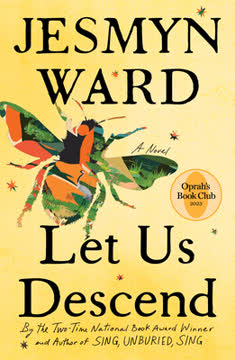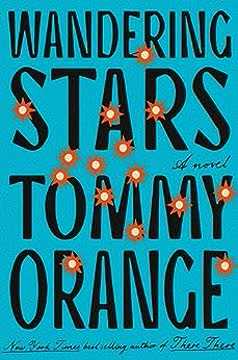Plot Summary
Bladed Hands, Warrior Blood
Annis's earliest memory is her mother's hand, both weapon and comfort, leading her into the Carolina woods to teach her the art of fighting. Her mother, Sasha, is a descendant of the fierce Fon warrior women of Dahomey, and she passes down stories and skills, whittling spears and teaching Annis to defend herself. These lessons are not just for survival but for remembering a lineage of resistance and power, even as they live under the rule of Annis's white father, their enslaver. The clearing in the woods becomes a sacred space, a place of inheritance and love, where Annis learns that her body and spirit are her own weapons, and that the stories of her foremothers are a shield against the world's violence.
Sorrow's Clearing
Annis and her mother work in the house of her white father, tending to his children and home. The daily grind is heavy, but the bond between mother and daughter is a source of solace. Annis envies her half-sisters' ease and education, but finds small joys in stolen moments—listening at doors, learning words, and feeling the pulse of her mother's stories. Yet, danger is ever-present: her father's gaze grows predatory, and her mother's warnings become urgent. The clearing in the woods, once a place of empowerment, now holds the weight of impending loss, as Annis senses the world closing in, threatening to sever the only safety she has ever known.
Ropeward and Ruin
The unthinkable happens: Annis's mother is sold away, torn from her in a moment of chaos and violence. The Georgia Man arrives, and Annis is left behind, her world gutted. Grief consumes her, and she withdraws from those around her, haunted by the absence of her mother's warmth. The clearing becomes a place of mourning, and the bees that once symbolized hope now seem to carry her sorrow. Annis's days blur into survival, her spirit battered by loss, until Safi, a fellow enslaved girl, reaches out with kindness, washing and braiding Annis's hair, offering a fragile thread of connection in a world built to break them.
Safi's Kindness, Annis' Grief
Safi's tenderness revives Annis, and the two girls form a deep, secret bond. Their nights together are a balm, a space where grief can be shared and bodies can find solace. Annis brings Safi to the clearing, introducing her to the bees and the stories of her warrior lineage. Their love is a quiet rebellion, a refusal to let sorrow have the last word. Yet, the threat of being sold hangs over them, and the world outside their embrace is unforgiving. When the Georgia Man returns, Annis and Safi are bound together, forced to march south, their love tested by the brutality of the journey and the ever-present possibility of separation.
Sold South, Spirits Stir
The march south is a descent into hell: hunger, exhaustion, and violence define each day. Safi and Annis are roped together, their wrists raw, their spirits fraying. Along the way, Annis begins to sense the presence of spirits—her grandmother Aza, a storm-wreathed figure, appears in visions, offering cryptic guidance and demanding to be called upon. The line of captives is thinned by death and escape; Safi manages to slip her bonds and flee, leaving Annis bereft once more. The spirits become both comfort and torment, their power ambiguous, their motives unclear, as Annis struggles to survive and remember who she is.
The Line of Loss
Annis's journey becomes a test of endurance, her body and mind pushed to the brink. She recalls her mother's and grandmother's stories, drawing strength from their resilience. The line of captives is a tapestry of suffering and solidarity—women and men helping each other, sharing scraps of hope. The landscape itself becomes a character: rivers threaten to drown, swamps to swallow, and the earth to entomb. Annis learns that survival is not just about the body, but about holding onto memory, refusing to let the world erase her lineage, her love, or her will to live.
Storms and Ancestors
Aza, the storm spirit, becomes a recurring presence, sometimes offering comfort, sometimes demanding worship. Annis grapples with the ambiguity of the spirits—are they saviors, or do they feed on suffering? Through visions and dreams, Annis learns more of her grandmother's crossing, her mother's pain, and the ways in which the past is never truly gone. The spirits are bound by their own rules, their own hungers, and Annis must decide how much to trust them. The line between the living and the dead blurs, and Annis realizes that her survival depends on both her own strength and her ability to navigate the world of spirits.
Rivers and Temptations
The journey south is marked by perilous river crossings, each one a test of will and luck. The river itself becomes a voice, tempting Annis with the promise of rest, of being held and freed from pain. Some captives are lost to the water, their bodies claimed by the current. Annis resists the river's call, remembering her mother's lessons: to run, to fight, to endure. The landscape is both enemy and witness, and Annis's relationship to the spirits deepens—she learns that the earth, the water, and the wind all demand offerings, all take as much as they give.
City of Woe
The captives arrive in New Orleans, a city teeming with suffering and indifference. Annis is processed, examined, and prepared for sale, her body appraised like livestock. The slave pen is a place of despair, but also of fleeting solidarity among the women. Spirits hover at the edges—Aza, She Who Remembers, and others—bearing witness to the pain, but unable or unwilling to intervene. Annis carves her mark into the wall, a bee beside her mother's spear, a small act of defiance and remembrance. The city is a labyrinth of loss, and Annis must find a way to survive its cruelties without surrendering her selfhood.
Surrender and Survival
Annis is put up for sale, her fate hanging on her ability to navigate the expectations of buyers and sellers. She resists being sold as a "fancy girl," instead emphasizing her skills as a cook and healer. The spirits urge her to surrender to a particular buyer, promising that this path will lead to freedom, but Annis is wary—she has seen how spirits, like people, can be capricious and self-serving. Ultimately, she chooses survival on her own terms, refusing to be a passive offering to gods or men. Her agency is hard-won, and the cost is a deepening loneliness, a sense of being unmoored from both the living and the dead.
The Hole and the Earth
After a confrontation with her new mistress, Annis is thrown into a punishment hole—a coffin-like pit in the earth, lined with spikes and mud. In the darkness, she communes with the earth itself, a spirit that takes and gives, that transforms suffering into new life. The earth tells her that all offerings are eventually returned, that nothing is lost forever. Annis claws her way out, battered but alive, her will to live undiminished. The experience is both a nadir and a rebirth, a descent into the underworld that leaves her changed, more attuned to the cycles of loss and renewal that govern all things.
Salt, Smoke, and Song
Annis returns to the world of the living, thrown back into the relentless labor of the plantation. The harvest is brutal, the hunger unending, but there are moments of beauty: a shared meal, a song sung in the night, the memory of a mother's touch. The women find ways to care for each other, to resist in small ways—sharing food, singing, remembering. The spirits are quieter now, their power less immediate, but Annis feels their presence in the earth, the river, the wind. She learns that survival is not just endurance, but the ability to find sweetness in the midst of bitterness, to sing even when the world would silence her.
Burning Men, Sweet Harvest
The plantation is consumed by the harvest, the fields burning with labor and loss. The master dies of fever, his body swelling and rotting, a grim offering to the earth. The women are forced to work the cane, their bodies cut and bruised, their spirits stretched thin. The process of making sugar is revealed as a cycle of violence—sweetness extracted through suffering, the land and its people both consumed. Annis witnesses the ways in which the dead linger, how the spirits of the enslaved and the enslavers alike are bound to the land. The harvest is both an ending and a beginning, a time of reckoning and release.
Thin and Smudge
As the harvest grinds on, Annis and her companions are reduced to shadows of themselves, their bodies and spirits smudged by hunger and exhaustion. Yet, there are moments of connection: a stolen kiss, a shared memory, a glimpse of hope. Bastian, Esther's brother, offers the possibility of escape, of a life beyond the plantation's borders. Annis is torn between the safety of hiding and the risk of running, between the pull of the spirits and the demands of the living. The world is thin, the boundaries between life and death, freedom and bondage, blurred. Annis must decide what she is willing to risk for a chance at something more.
Ferries and Mothers
After another violent confrontation, Annis is thrown back into the hole, but this time she refuses to surrender. Drawing on the lessons of her mother and grandmother, the strength of the earth, and the guidance of the Water, she claws her way out, breaking free from both physical and spiritual bondage. The spirits urge her to run, to trust in her own power. Annis fashions a raft and escapes down the river, pursued by dogs and men, but buoyed by the memory of her mother's love. Along the way, she is visited by the spirits of her ancestors, who remind her that she is her own weapon, her own deliverance.
Once More Saw Stars
Annis finds refuge in a hidden clearing, a place abandoned by the world but alive with the memory of those who came before. She builds a home, forages for food, and learns to live with the land. The spirits visit her, but she no longer seeks their approval—she is her own, and the child growing inside her is a testament to her survival. The loneliness is real, but so is the freedom. Annis looks up at the stars, remembering the words of the Italian poet: "Now we came out, and once more saw stars." Her journey is not over, but she has claimed her place in the world, a living link between the past and the future.
Characters
Annis
Annis is the heart of the novel—a young, enslaved woman whose journey from the Carolina rice fields to the swamps beyond New Orleans is both physical and spiritual. Daughter of Sasha, a woman of warrior lineage, and her white enslaver, Annis is marked by both trauma and inheritance. Her psyche is shaped by loss: the forced separation from her mother, the brutality of the march south, the betrayals and kindnesses of those around her. Annis's relationships—with her mother, with Safi, with the spirits—are complex, marked by longing, suspicion, and a fierce desire for autonomy. Over the course of the novel, she transforms from a girl defined by her mother's protection to a woman who claims her own agency, refusing to be merely an offering to gods or men. Her journey is one of descent and ascent, of learning to wield her own power, to love and grieve, and ultimately to survive on her own terms.
Sasha (Annis's Mother)
Sasha is both shield and sword for Annis, a mother who teaches her daughter to fight, to remember, and to endure. Descended from the Fon warrior women, Sasha embodies both strength and vulnerability—her love is a weapon, her stories a lifeline. Her relationship with Annis is tender but fraught, shaped by the ever-present threat of violence and separation. Sasha's own trauma—rape, enslavement, the loss of her mother—haunts her, and she is determined to pass on what little power she has to her daughter. Her forced sale is the novel's first great rupture, and her absence becomes a wound that shapes Annis's every choice. Even in death, Sasha's presence lingers, a voice of guidance and love that ultimately helps Annis claim her own freedom.
Safi
Safi is Annis's closest friend and first love, a fellow enslaved girl whose kindness revives Annis from the depths of grief. Their relationship is a sanctuary, a space where touch and tenderness are possible in a world built on violence. Safi is gentle but strong, her own history marked by loss and survival. Her escape from the coffle is both a triumph and a heartbreak, leaving Annis more alone but also more determined. Safi represents the possibility of love and connection, the sweetness that can exist even in the most bitter circumstances. Her absence is a source of longing, but her memory is a source of strength.
Aza (Storm Spirit/Ancestor)
Aza is a complex, shape-shifting spirit—sometimes appearing as Annis's grandmother, sometimes as a storm, always demanding regard. She is both comfort and threat, offering guidance but also feeding on worship and suffering. Aza's relationship with Annis is fraught: she wants to be a mother, a savior, but is bound by her own rules and limitations. She is jealous, capricious, and ultimately self-interested, but she also embodies the power of ancestry, the persistence of memory, and the possibility of transformation. Annis must learn to navigate Aza's demands, to accept help without surrendering her autonomy, and to recognize that true deliverance comes from within.
Phyllis
Phyllis is one of the women Annis is chained to during the march south. She is marked by suffering—her body broken, her spirit battered—but she endures, finding moments of connection and solidarity with Annis and the others. Phyllis's story is one of survival in the face of overwhelming odds, a reminder that the line of loss is also a line of resistance. Her fate is a testament to the cost of endurance, the ways in which the world can smudge and thin a person, but also to the possibility of finding meaning in shared struggle.
Bastian
Bastian is Esther's brother, a man who has escaped the plantation and lives in the borderlands, trading and surviving on the margins. He represents a different kind of freedom—precarious, incomplete, but real. His relationship with Annis is tentative, marked by mutual recognition and longing. Bastian offers the possibility of a life beyond bondage, of building something new in the ruins of the old. His presence challenges Annis to imagine a future for herself, to risk love and connection even after so much loss.
Esther
Esther is a fellow housemaid and field worker, a woman whose life is shaped by hunger, violence, and the constant threat of loss. She is practical, resourceful, and fiercely protective of those she loves—especially Mary and her brother Bastian. Esther's story is one of survival, but also of the limits of endurance; she is haunted by the violence done to her and her family, and her choices are shaped by fear as much as hope. Her bond with Annis is one of mutual recognition, a shared understanding of what it means to live on the edge of annihilation.
Mary
Mary is Esther's companion, a woman who rarely speaks but whose presence is a source of comfort and stability. She expresses herself through song, her voice a balm in the night, a reminder of what has been lost and what endures. Mary's silence is not weakness but a form of resistance, a refusal to be defined by the world's violence. Her bond with Esther is deep, and her fate is intertwined with Annis's, a testament to the ways in which survival is always collective, always dependent on the strength of others.
The Lady (Mistress)
The lady is Annis's final enslaver, a woman whose power is both absolute and brittle. She is obsessed with control—of her household, her workers, her own grief—and her cruelty is both casual and calculated. Her relationship with Annis is marked by violence and projection; she sees Annis as both threat and possession, and her attempts to break Annis are ultimately futile. The lady's own suffering—her husband's death, her mother's decline—does not humanize her, but rather reveals the ways in which whiteness is sustained by the suffering of others.
They Who Take and Give (Earth Spirit)
The earth itself is personified as a spirit that both devours and bestows, a force that takes offerings—blood, sweat, tears, bodies—and transforms them into new life. This spirit is neither benevolent nor malevolent, but simply inevitable, a reminder that nothing is lost, that all suffering is eventually transmuted. Annis's communion with the earth in the hole is a turning point, a moment of rebirth that grounds her in the cycles of the natural world. The earth's presence is a counterpoint to the more personal spirits, a reminder that survival is always part of a larger, impersonal process of transformation.
Plot Devices
Ancestral Memory and Storytelling
The novel is structured around the transmission of stories—mother to daughter, ancestor to descendant, spirit to living. These stories are both a source of strength and a means of survival, a way of remembering what the world would erase. The act of storytelling is itself a form of resistance, a refusal to be defined by the violence of enslavement. The stories of Mama Aza, Sasha, and Annis are interwoven, creating a tapestry of memory that sustains the characters even in the darkest moments.
Spirit World and Magical Realism
The presence of spirits—Aza, the earth, the river, She Who Remembers—infuses the novel with a sense of magical realism. These spirits are not simply metaphors, but active agents in the world, shaping events and demanding offerings. Their motives are ambiguous, their power both comforting and threatening. The boundaries between the living and the dead, the natural and the supernatural, are porous, reflecting the ways in which trauma and memory haunt the present. The spirits serve as both plot devices and symbols, embodying the persistence of the past and the possibility of transformation.
Descent and Ascent
The novel is structured as a descent—into grief, into bondage, into the underworld of the hole, the city, the river—and an ascent, a return to the world of the living, to freedom, to the stars. This structure echoes Dante's Inferno, explicitly referenced in the text, and serves as both a literal and metaphorical journey. The descent is necessary for transformation; only by passing through suffering can Annis claim her own agency and begin to imagine a different future. The ascent is not triumphant, but hard-won, marked by loss and the scars of survival.
Foreshadowing and Symbolism
Throughout the novel, certain images recur: bees as symbols of community and inheritance; rivers as both barriers and pathways; weapons as both tools of violence and symbols of agency. These motifs foreshadow key events—Annis's escape, her survival, her eventual freedom—and serve as touchstones for the characters' emotional journeys. The act of carving a bee beside her mother's spear is a small act of defiance, a promise that the line of memory will not be broken.
Analysis
Let Us Descend is a searing meditation on the legacy of slavery, the endurance of Black women, and the complex interplay between suffering, memory, and survival. Jesmyn Ward crafts a narrative that is both historical and mythic, grounding the horrors of the Middle Passage and American chattel slavery in the intimate, embodied experience of one young woman. The novel's use of spirits and magical realism is not escapist, but rather a way of articulating the ways in which trauma reverberates across generations, how the dead are never truly gone, and how survival is always a negotiation between the demands of the past and the possibilities of the future. Annis's journey is both a literal descent into hell and a metaphorical one, a passage through grief, violence, and loss that ultimately leads to a hard-won, solitary freedom. The novel refuses easy redemption or closure; instead, it insists on the necessity of remembering, of telling stories, of claiming agency even in the face of overwhelming odds. The lessons of the book are clear: survival is not just endurance, but the ability to find sweetness in bitterness, to sing in the darkness, to become one's own weapon. In the end, Let Us Descend is a testament to the power of Black women's love, memory, and resistance—a story that, even in its darkest moments, points toward the stars.
Last updated:
Review Summary
Let Us Descend is a powerful, haunting novel about slavery that blends brutal realism with magical elements. Ward's lyrical prose and vivid storytelling captivate readers, though some found the magical realism excessive. The book follows Annis, a young enslaved woman, on a harrowing journey from the Carolinas to Louisiana. Many praised Ward's ability to convey the horrors of slavery while maintaining hope and resilience. While some readers struggled with the pacing and supernatural aspects, most agreed that Ward's writing is exceptional and the story deeply impactful.
Similar Books
Download PDF
Download EPUB
.epub digital book format is ideal for reading ebooks on phones, tablets, and e-readers.
















